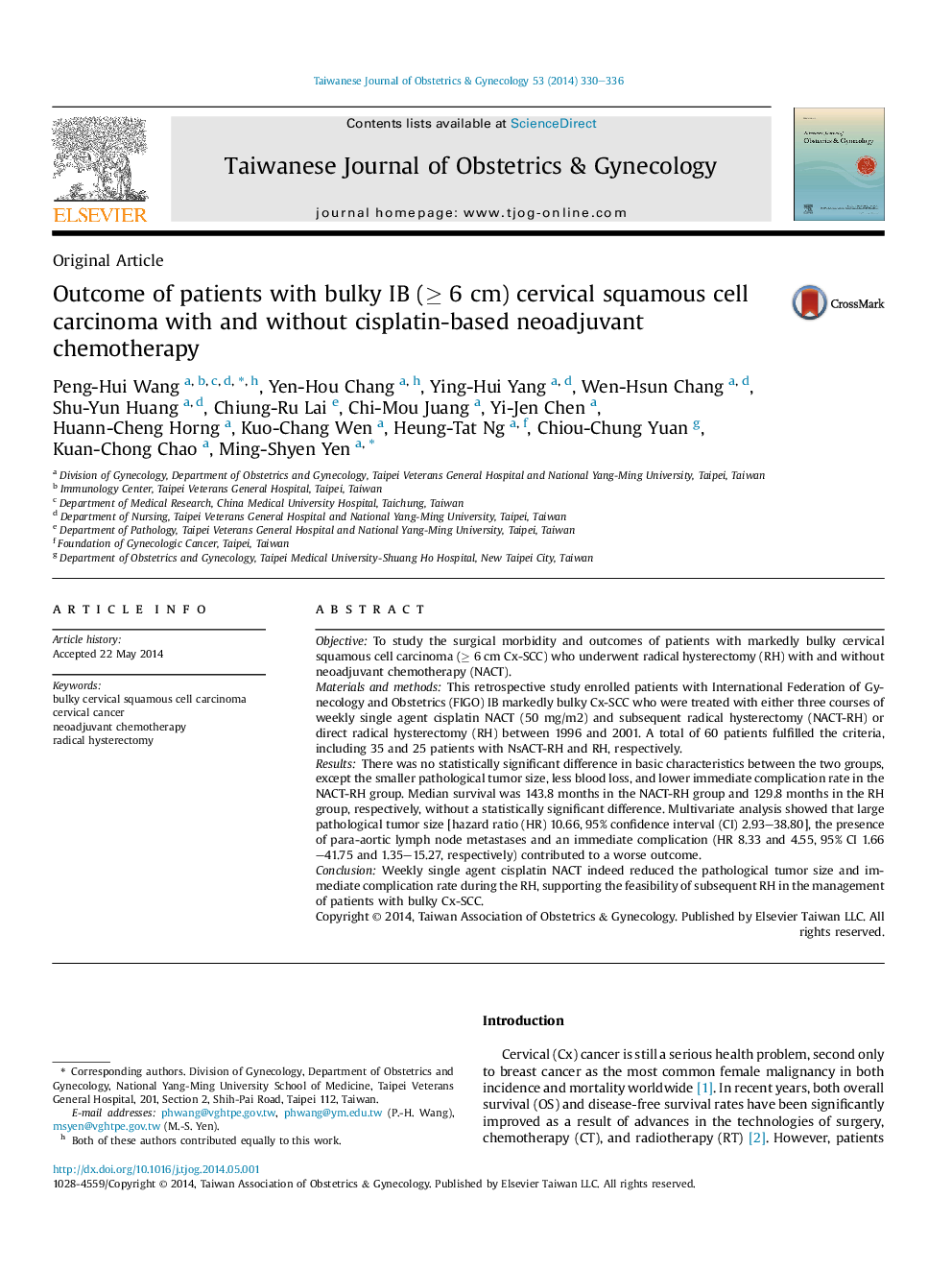| Article ID | Journal | Published Year | Pages | File Type |
|---|---|---|---|---|
| 3975201 | Taiwanese Journal of Obstetrics and Gynecology | 2014 | 7 Pages |
ObjectiveTo study the surgical morbidity and outcomes of patients with markedly bulky cervical squamous cell carcinoma (≥ 6 cm Cx-SCC) who underwent radical hysterectomy (RH) with and without neoadjuvant chemotherapy (NACT).Materials and methodsThis retrospective study enrolled patients with International Federation of Gynecology and Obstetrics (FIGO) IB markedly bulky Cx-SCC who were treated with either three courses of weekly single agent cisplatin NACT (50 mg/m2) and subsequent radical hysterectomy (NACT-RH) or direct radical hysterectomy (RH) between 1996 and 2001. A total of 60 patients fulfilled the criteria, including 35 and 25 patients with NsACT-RH and RH, respectively.ResultsThere was no statistically significant difference in basic characteristics between the two groups, except the smaller pathological tumor size, less blood loss, and lower immediate complication rate in the NACT-RH group. Median survival was 143.8 months in the NACT-RH group and 129.8 months in the RH group, respectively, without a statistically significant difference. Multivariate analysis showed that large pathological tumor size [hazard ratio (HR) 10.66, 95% confidence interval (CI) 2.93–38.80], the presence of para-aortic lymph node metastases and an immediate complication (HR 8.33 and 4.55, 95% CI 1.66–41.75 and 1.35–15.27, respectively) contributed to a worse outcome.ConclusionWeekly single agent cisplatin NACT indeed reduced the pathological tumor size and immediate complication rate during the RH, supporting the feasibility of subsequent RH in the management of patients with bulky Cx-SCC.
